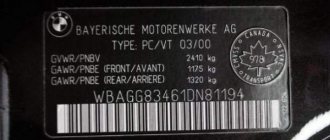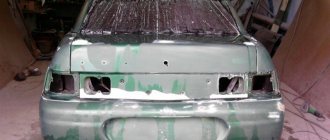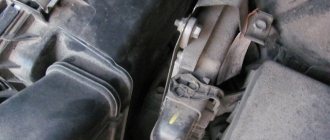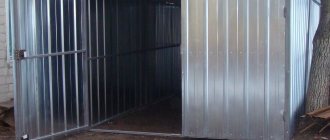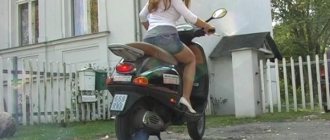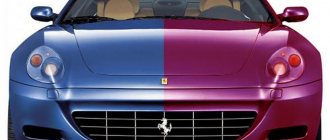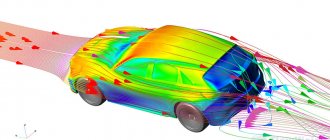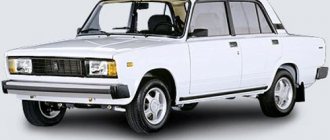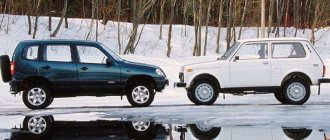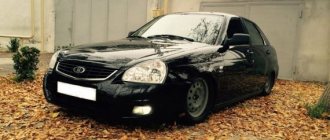Why do you need to release the trigger at the end of the passage?
The trigger is released before the panel border in order to avoid the formation of smudges on the edges of the part (as a result of the overlay of layers of paint). This also helps prevent paint from getting onto the adjacent panel.
Release the trigger at the end of each pass and when the gap between panels is reached. This method will help avoid smudges, minimize over-pollination and save materials.
The spray gun must be in motion before the trigger is pulled and when the trigger is released.
- If we consider this process in more detail, the algorithm of actions is as follows:
- We begin passing beyond the boundary of the part, press the trigger halfway, so that only air comes out (this will prevent a sharp release of paint when pressed fully).
- When the spray gun reaches the edge of the panel, press the trigger completely to spray paint.
- We release the trigger halfway, stopping the flow of paint when the gun reaches the other edge.
- Continue moving about another 5 cm.
- We repeat the sequence.
Spray gun type
Paint consumption is significantly affected by the design of the spray gun. HVLP spray guns have a high percentage of paint and varnish material transfer to the surface being painted. For high-quality HVLP spray guns, this percentage is more than 75%. When painting with such spray guns, the paint gets onto the part as much as possible, and does not fly to the sides.
From personal experience I can say that when I take high-quality paint in the quantity recommended for painting the parts I need, the paint often remains (sometimes more than half). I paint with an Iwata W‑101 spray gun, purchased from an official representative in Russia. From my own experience I am convinced that a high-quality, economical spray gun significantly reduces paint consumption.
How much paint is required to paint a car?
Over time, the car has to be repainted to update the body color or after a major overhaul of the car. You can carry out this operation yourself, but you must first calculate it to find out how much material (paint) is required for a given car brand. Otherwise, you will have to purchase an insufficient volume, which may differ slightly in tone.
Car paint – which one to choose?
Paint consumption on a car will also depend on the type of paint coating chosen. Any paint contains several essential components:
- Pigment (the color of the chosen paint depends on it).
- Binder (thanks to it, the pigment is firmly attached to the surface of the body).
- Solvent (gives the paint the necessary fluidity).
Acrylic enamels are considered the most popular car paints. Their main advantages are the price-quality ratio; they allow you to obtain a uniformly colored surface that has a good shine.
dye
Such paints dry quickly and are resistant to various mechanical influences. How many liters of paint do you need to paint a car? If acrylic enamel is used, the consumption will be about 2 liters, but you need to remember that if you plan to paint the inside of the body as well, the consumption will increase by 1-1.5 liters.
Acrylic paint for car painting has many advantages, but it is difficult to polish. Therefore, if the car needs to be repainted, it is better to use soft paints that are easier to polish.
putty
The rust that appears on the body of the VAZ model 2110 is cleaned off with sandpaper to bare metal. The emerging shells are treated with a rust converter, which can be found in many car dealerships.
After sanding, damaged and straightened areas must be puttied. For such work, a quick-drying two-component epoxy-based putty is used. It is applied with a spatula to a previously degreased surface in a thin layer. After the putty has dried, the surface is leveled by sanding it with abrasive paper using a sanding machine or manually.
In the latter case, use a wooden block or a special device with clamps for sandpaper. They are needed to form a hard, flat surface underneath. This is especially important when processing large surfaces, such as a car roof. If, as a result of processing the putty, bare metal begins to show through, then the procedure is repeated until a smooth surface is obtained, completely ready for further priming and painting. The installation locations for car headlights have a complex metal configuration, so this will require particularly painstaking work.
Damaged or restored plastic bumper is also puttied and then sanded until a smooth surface is obtained.
Preparing for painting
The surface of the machine must be prepared. It must be smooth, sanded for painting, clean, and free of grease.
If necessary, you need to putty all the uneven areas, sand them and prime them. Coloring them will not hide them, but will only emphasize them.
Soil can also be used from spray cans. It is applied in 2-3 layers. This is a one-component primer (without a hardener) and takes quite a long time to dry. After the solvent evaporates, a fairly thin layer remains, so it is not able to fill large scratches. The part for such a primer is prepared with abrasive P180 - P220. When applying several layers, drying time between them is required for about 10 minutes. The dried primer and old coating are prepared with P600-P800 sanding paper. All adjacent elements of the machine that are not subject to painting are covered with camouflage materials.
Paint color and original body color
p, blockquote 7,0,1,0,0 —>
The amount of paint required to paint a car depends on what color the car will be painted and what the original color of the surface to be painted is. If the body panel has a color contrasting to the one being sprayed, then more paint will be needed. Colors such as yellow, red, and blue are low opaque, so more paint may be needed to cover the original color. If the paint has low coverage, then it is necessary to apply more layers to paint the substrate. For example, when painting with red and yellow paint, up to 10 or more layers may be required.
p, blockquote 8,0,0,0,0 —>
Colors such as black, white, and bright green have good hiding power.
p, blockquote 9,0,0,0,0 —>
If a car is repainted due to numerous minor defects and scratches that are sanded off during preparation of the body for painting, then less paint will be used than when changing the color of the car.
p, blockquote 10,0,0,0,0 —>
The color of the substrate will affect the final shade of the paint.
p, blockquote 11,0,0,0,0 —>
Note: Hiding power is the ability of paint, when sprayed, to completely cover the color of the surface, that is, to cover the color of the substrate with the sprayed color. Thus, the more opaque the paint, the less it will be needed to paint the part.
p, blockquote 12,0,0,0,0 —>
Criterias of choice
Today, supermarkets and markets sell a variety of goods of varying prices and quality. What to choose and what to be guided by? The main selection criteria are:
- manufacturer - it is better to purchase goods from well-known brands that guarantee quality and have earned national recognition. These companies are Motip, KUDO, Molotow, MTN and Trane.
- volume - you need to know the approximate consumption of material, and take it with a small margin, preferably in a large container, it will be a little cheaper.
- the presence of an instruction manual and complete set so that there is no need to purchase any accessories separately.
It also makes sense to familiarize yourself with the prices - the difference in cost in different supermarkets for the same product can reach up to 30-40%.

